Customer Lifecycle Marketing: How it Works and the Benefits for SaaS Companies
Learn how customer lifecycle marketing can help you develop marketing strategies that will help you grow your SaaS Company.

Do you have a challenge in bringing in new customers and retaining existing ones? Most SaaS companies deal with the challenge of closing deals and growing their customer base. Fortunately, there is a strategy that solves this problem. It's called customer lifecycle marketing.
While most businesses tend to adopt an approach that fits their marketing and company goals, one thing is clear–customer lifecycle marketing helps engage customers, increase revenue, turn prospects into paying customers and brand advocates.
How can you leverage this powerful marketing trend? In this guide, you will learn what customer lifecycle is, how it works and how to develop a customer lifecycle marketing strategy that would work for your business.
Keep reading.
Table of Content
- What is Customer Lifecycle Marketing?
- The Stages of Customer Lifecycle Marketing.
- Customer Lifecycle Marketing Strategy
- Benefits of a Great Customer Lifecycle Marketing Strategy
- Lifecycle Marketing Metrics to Track.
- Apply Customer Lifecycle Marketing in Your Business.
What is Customer Lifecycle Marketing?
Customer lifecycle marketing is the process of positively influencing customer behavior through personalized communication and experiences. The goal is to provide customers with the information they need, want or like as they move through each stage of the marketing cycle. Lifecycle marketing involves different steps.
To acquire new customers and retain them, you need to understand your audience's specific needs at every customer journey stage. Let's dive into the various stages of customer lifecycle marketing.
The Stages of the Customer Lifecycle Marketing
There are five stages involved in the customer lifecycle marketing;
- Awareness,
- Engagement,
- Evaluation,
- Conversion, and
- Brand advocacy.
1. Awareness
Awareness is the first phase. In this stage, the customer gets to learn about your brand for the first time. Customer awareness can happen through several online/offline channels, display ads, cold emails, or social events.
This phase presents the opportunity to capture your audience's attention and drive them further down the customer journey.
2. Engagement
People begin to interact with your brand. They begin to express interest in your product offering by reading a blog post, subscribing to your email list, downloading an e-book or simply following you on social media.
3. Evaluation
This stage involves decision making. Your audience would have acquired sufficient information, and it would have to increase your audience interest in your brand. Now, you can use the opportunity to showcase your brand by providing more information to help them compare pricing analyze product features and unique value propositions.
4. Conversion
Conversion is an important stage in the customer lifecycle marketing. Studies have shown that new customer acquisition cost five times more than retention. Anyone who makes it to this stage is undoubtedly one you should treat with great importance. The goal is to make the customer buying experience a seamless one.
5. Brand advocacy
When customers are satisfied with your product or service, they won't hesitate to tell friends, family or acquaintances about your brand, and this is where brand advocacy comes in. It would be best if you nurtured this advocacy to keep customers interested in your brand and bring in new customers.
The customer lifecycle marketing stage is a crucial aspect of your overall marketing strategy. You must remember to view this cycle as a repeatable process that constantly drives in new customers and retains old ones. Just because a customer paid for your SaaS product doesn't mean that you should abandon them.
You need to adopt a well-planned strategy that will help you to meet your business and marketing goals. This brings us to the next section, where you will learn how to develop an effective customer lifecycle marketing strategy to bring in new customers.
Customer Lifecycle Marketing Strategy
The strategy you adopt in customer lifecycle marketing depends on a lot of factors. A lousy strategy could mean low-quality leads, increased churn rates, waste of time and resources. On the other hand, a good strategy could lead to higher levels of customer engagement, brand advocates, and growing customer value.
When developing a customer lifecycle marketing strategy, you should know that different businesses apply different approaches. A company may decide to include specific touchpoints and channels such as social media, emails, online events within each stage. While another may decide to include SEO, paid ads or google display ads.
What matters is that you understand your audience and business needs. Let us go through the strategies you need to apply at each stage.
1. Awareness Stage
This strategy involves driving eyeballs to your brand. It would be best if you used every opportunity to attract potential customers within your audience. So in this stage, you can create targeted content and share them where your audience frequents the most.
Here are the strategies you can include:
- Identify your target audience and develop a detailed ideal customer persona profile, including their needs, preferences and buying behavior.
- Perform deep keyword research so you can identify the keywords that your ideal audience uses to search for solutions similar to what your product offers. It is essential that you also discover the search intent behind each keyword.
- Set up display ads on search engines revealing your product offering to attract your audience to your brand.
- Collaborate with influencers on social media platforms to promote your product.
In this awareness stage, your audience is just getting to know your brand. First impression matters, so you need to build your relationship with prospects on a solid foundation.
2. Engagement Stage
In the engagement strategy, you need to share informative content about your brand's value to users. In this way, people can get a better idea of your product offering and the benefits it provides. The content you create should answer your audience's core questions.
Here are some of the strategies you can apply:
- Video demos to reveal your product's features in action,
- Blog posts, e-books, guides that throw light on common customer problems,
- Email marketing campaigns to drive customers to your site,
- Whitepapers to reveal in-depth industry research, and
- Case studies that demonstrate the benefit and value other users have derived from your product.
When it comes to customer engagement, you need to apply a personalized approach. Customers have different pain points, needs, and buying behavior preferences, so you need to create content that caters to their needs. As a result, customers would relate more quickly to your content and be more willing to engage with your brand.
3. Conversion Stage
At the conversion stage, the prospect is already interested in your brand. So, in this stage, you need to provide the correct information that would convert the potential customer to a paying customer.
Here are the strategies you can apply to influence your prospect's buying decision positively.
- Create a demo or free trial to reduce the barrier to entry. Customers can be more confident to invest in your product offering.
- Include customer testimonials on your website so prospects can see how other people have benefitted from your product.
- Include detailed pricing and features information so prospects can compare available options.
4. Retention Stage
While you may make every possible effort to acquire customers, you should also prioritize retaining your best customers. 93% of customers are more likely to buy from companies that offer excellent customer service. Your job is to offer a great customer experience and top-notch customer service after people buy from your brand.
Here are the strategies you can apply to retain your best customers:
- Conduct customer surveys to gain better insight into what works and doesn't work,
- Be active in your online community. The key is to be open and sincere as you interact with your customers. Let your customers perceive your brand as a real person and not a cold corporate brand,
- Provide a great onboarding experience to your customers. You can send an email that includes a short video tutorial on using your product's features,
- Improve customer service with support options such as a live messaging service, FAQ pages and skilled customer service agents,
- Offer surprise gifts and discount offers on your customer's next purchase, and
- Apply personalization during communication with customers. Use customer data such as name, purchase history, and purchase touchpoints to improve their experience.
Engage offers powerful customer segmentation to help you group customers by similar attributes (traits, properties) and events. You can then easily send targeted personalized campaigns to these segments. Sign up for free.
It would be best to make it a vital responsibility to help your users throughout the customer journey.
Doing this will ensure that you keep them coming back for your product or service. As a result, you can expect a consistent increase in revenue and improved customer experience.
5. Brand Advocacy Stage
Loyal customers can automatically generate more leads and sales for your brand. Your brand advocates will always be happy to inform other people about your brand. So how can you leverage this opportunity?
Here are some strategies you can apply:
- Set up a rewards program for customers who bring in new customers.
- Ask for customer reviews.
- Show appreciation. "A simple thank you" can make a big difference.
- Keep communication with customers active.
- Offer freebies or discount offers for customers who share testimonials.
- Create customer loyalty tiers.
Customers value a brand that they can trust. So you must meet customer expectations and show them that you appreciate their interest in your brand.
Benefits of a Great Customer Lifecycle Marketing Strategy
As mentioned earlier, an effective customer lifecycle marketing strategy can turn prospects into customers and paying customers into brand advocates. The reason is apparent. Personalized customer marketing can lead to an improved customer experience that guarantees customers remain loyal to your brand.
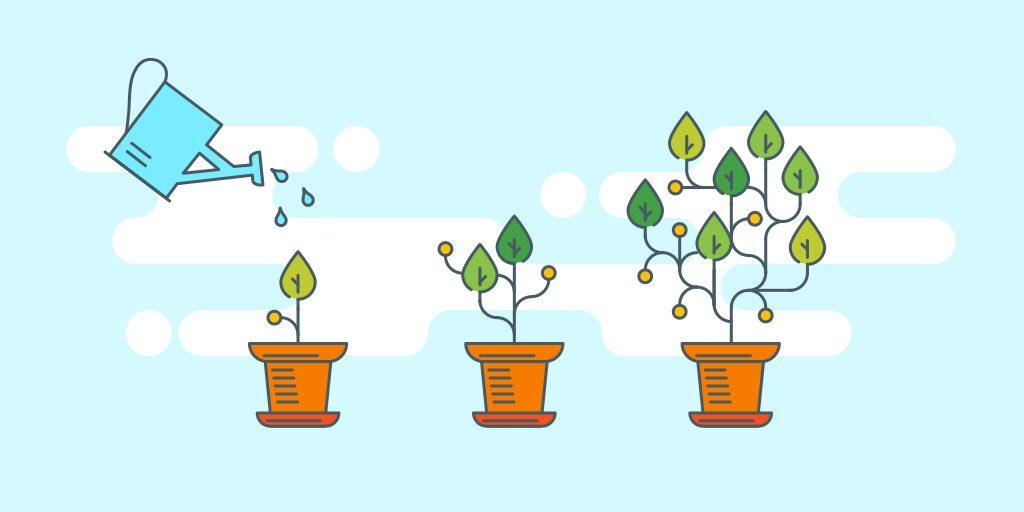
Here are the additional benefits of an excellent customer lifecycle marketing strategy.
1. Increase in Customer Lifetime Value
If you leave your customers to fend for themselves after their first purchase, there's a chance the customers will churn. When you keep customers involved at every stage in the life cycle, you increase your chances of turning customers into brand advocates.
Also, being a part of your customer's lifecycle journey will help you identify issues your customers are dealing with at specific touchpoints along their journey. So you can know new areas to dedicate your time and resources to.
2. Save Time and Resources.
A personalized customer marketing approach helps you generate high-quality leads—this cancels out the stress of dealing with low-quality leads. Doing this is much better than relying on poor marketing tactics that will only generate low-quality leads.
Studies have shown that it's 5-25 times more cost-effective when you focus on building relationships with customers already familiar with your brand. Make it a priority to deliver specific, valuable content to paying customers, and you can expect to save resources.
3. Increased Marketing Return On Investment
When you invest in effective paid ads with compelling copy, well-designed graphics and relevant messaging, users are more likely to engage with your brand. As a result, you will consistently receive a positive outcome from your marketing campaigns.
Customer lifecycle marketing is a gold mine when it comes to communicating with customers. It forces you to think out of the box rather than opt for a poor marketing tactic. It exposes you to customer buying behaviors, patterns, and preferences.
Instead of sending a generalized message to all your customers, you can segment your audience and deliver relevant content that will provide the best value at each customer lifecycle stage.
Lifecycle Marketing Metrics to Track
As you apply the different lifecycle marketing strategies mentioned above, you need to be able to identify the most critical key performance indicators that should be tracked at every stage of the customer's lifecycle.
While many metrics reveal crucial information about what to do and the issues involved, it's essential to focus on only the metrics that are entirely relevant to your business and marketing goals. These are the metrics that will show you if your efforts are paying off.
Here are the five metrics:
1. Customer Usage Frequency
How often are your customers using your product or service? Find out if they are persistent or if they use your product once in a while. Once you identify the usage pattern, you can figure out the following steps to take.
With Engage, you can track how customers are interacting with your product:
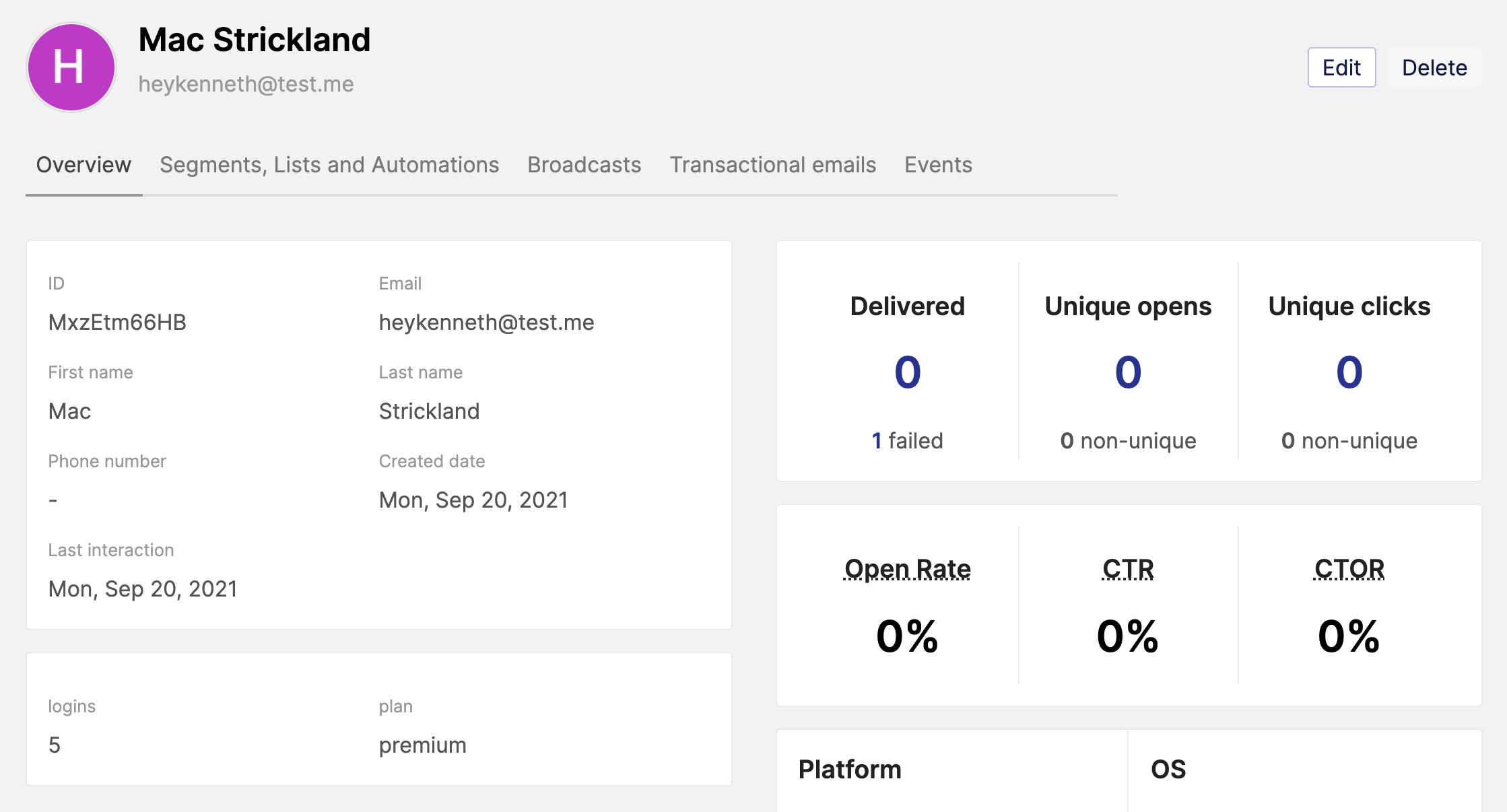

2. Renewal Rate
An increase in your renewal rate is an excellent indicator of whether users derive significant value from your product if customers are coming back for more than you can expect an increased renewal rate.
How to calculate Renewal Rate = (Total repeat customers who purchased 2+ times/ Total of paying customers who purchased 1+ times) x 100
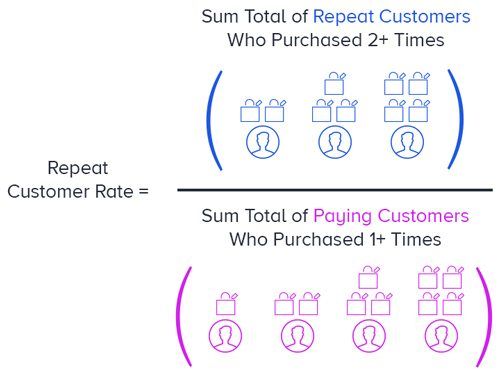
3. Customer Retention Rate
Your customer retention rate is the ratio of the number of retained customers to the number at risk. What kind of customers churn annually? What's the percentage of customers that your business retains over a certain period?
If your customer loyalty rate is low, it means your business is retaining fewer customers. If your retention rate is high, then it means that more customers are loyal to your brand.
How to calculate customer retention rate = (Number of active users across period/ Total number of active users in the previous period) X 100
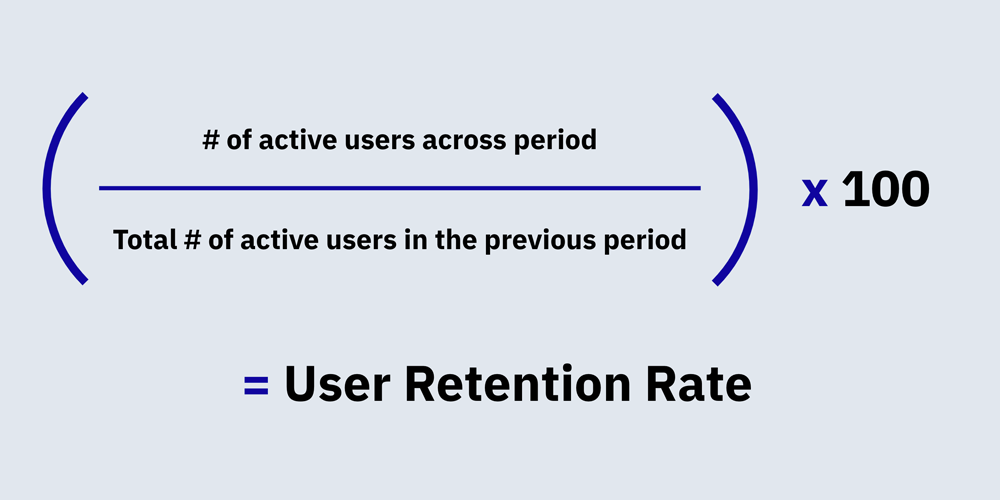
4. User Activation Rate
The activation rate is the percentage of people who complete a particular milestone in your customer onboarding process.
How to calculate activation rate = (Number of user sessions/Number of activities completed by users) x 100

5. Loyal Customer Rate
When a customer decides to tell others about your brand, it is a valuable key performance indicator that you can rely on.
How to calculate Loyal Customer Rate = (Number of customers who purchased 4+ times(365 days) / Number of unique customers(365 days)) x 100
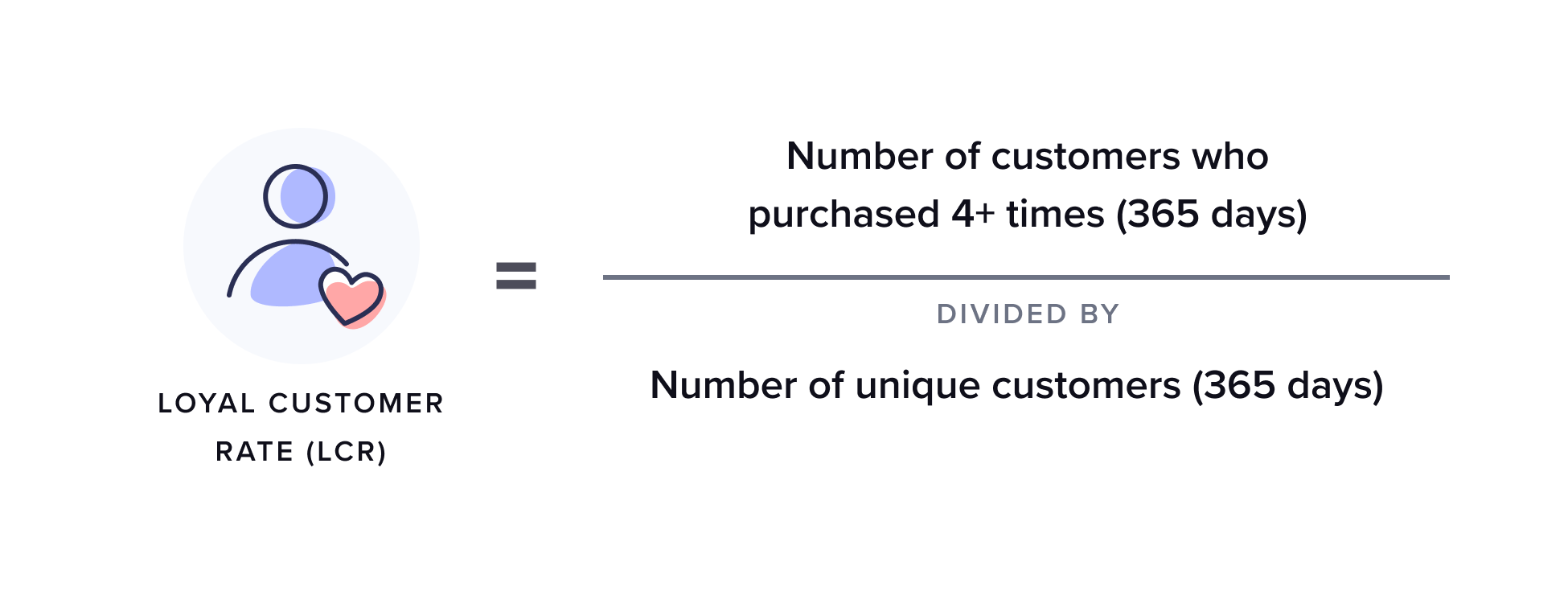
How to Apply Customer Lifecycle Marketing in Your Business
You have now learned how customer lifecycle marketing works, how to develop an effective customer lifecycle marketing strategy and its benefits for SaaS companies. All you need to do is look deeply into your customer data to gain insights into your customer's key actions when using your product or experiencing your platform.
This way, you will understand your customers better and deliver targeted valuable content. But to do so, you need to have the right software in your arsenal to help you track the necessary customer data.
Engage will help you do exactly that:
- Track how customers interact with your product,
- Create unique customer segments, and
- Send personalized messages to your customers via Email, SMS, Push Notification and In-app Messages.
It is totally free to try out. Sign up now.